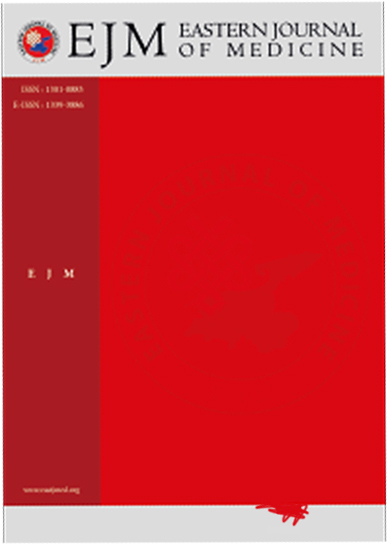Spinal anesthesia is associated with postoperative urinary retention in women undergoing urogynecologic surgery
Gulseren Yilmaz1, Aysu Akça2, Huseyin Kiyak2, ONUR KARAASLAN3, ZİYA SALİHOĞLU41Department Of Anesthesiology & Reanimation, University Of Health Sciences, Faculty Of Medicine, Kanuni Sultan Suleyman Teaching And Research Hospital, Istanbul, Turkey2Department Of Obstetrics And Gynecology, University Of Health Sciences, Faculty Of Medicine, Kanuni Sultan Suleyman Teaching And Research Hospital, Istanbul, Turkey
3Department Of Obstetrics And Gynecology, University Of Yuzuncu Yıl, Van, Turkey
4Department Of Anesthesiology & Reanimation, University Of Istanbul, Faculty Of Cerrahpasa Medicine, Istanbul, Turkey
INTRODUCTION: Objective: We hypothesized that spinal anesthesia could lead to impairment in bladder function and consequently to postoperative urinary retention(POUR), particularly in patients undergoing urogynecologic surgery. This study aimed to compare the rate of the POUR between the subjects receiving spinal and general anesthesia who underwent urogynecologic surgery.
METHODS: One hundred and eighty subjects who underwent urogynecologic surgery in a between June 2016 and May 2019 were retrospectively analyzed to evaluate the risk of POUR after general versus spinal anesthesia. All subjects underwent a standardized voiding trial subsequent to surgery, which was performed by backfilling the bladder with 300 ml of saline. Presence of > 100 ml volume in post-void bladder scan was defined as POUR. The primary outcome was to compare rates of POUR between spinal and general anesthesia. Identifying the risk factors for POUR was the secondary outcome of this study.
RESULTS: Spinal anesthesia group included 80, and the general anesthesia group consisted of 100 patients. The overall rate of the POUR was %22.8. The proportion of the patients with POUR was significantly higher in the spinal anesthesia group compared to that of the subjects in the general anesthesia group (%33.8vs. %14,P=0.002). Multivariate logistic regression analysis revealed that adoption of spinal anesthesia (Odds ratio: 3.172, 95%CI: 1.383-7.275, P=0.006) and presence of diabetes (Odds ratio: 5.840, 95% CI: 2.325-14.666, P< 0.001) were independent predictors for the development of POUR.
DISCUSSION AND CONCLUSION: The rate of the POUR is significantly higher in patients receiving spinal anesthesia than those receiving general anesthesia among women undergoing urogynecologic surgery.
Keywords: Spinal anesthesia, pelvic organ prolapsed, urinary incontinence, postoperative urinary retention
Manuscript Language: English














